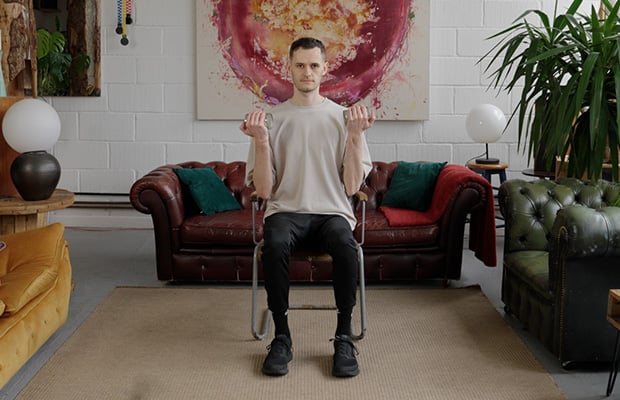Before his diagnosis, Matt Hardman, 38, from London, loved keeping fit. He was a keen runner and had completed three marathons and six half marathons.
“Each day I used to get up and do press-ups,” he says. “Then three times a week I’d go for a five-mile run. I’d either run home from work or run in the morning at the weekends.” But things changed in autumn 2017, when Matt suddenly became breathless while out on a training run. He was told by his consultant that he had gone into ventricular tachycardia, or VT (a fast, abnormal heart rhythm), and was asked to avoid strenuous exercise until he could be diagnosed.
Can I still exercise at all?
“I had a lot of questions,” says Matt. “I thought: ‘Can I even exercise at all?’ I was worried about the psychological impact. For me, running wasn’t just about the physical release, but also the mental release. I used to do a lot of thinking when I ran.” Determined to exercise in a safer way, Matt tried different sports. He took up yoga (which he didn’t like at first but now enjoys) and tried and weights.

Five months later, while he was having a kick around with a football, Matt went into VT again. In the ambulance, he had a cardiac arrest. He was fitted with an implantable cardioverter defibrillator (ICD), a device that would deliver a shock to restart his heart if it happened again.
“[The ICD] was yet another challenge,” Matt says. “I heard that you can’t raise your arm above your shoulder for a while after the procedure. I was worried about doing front crawl and pulling the wires out of my heart or my skin splitting.”
Maintaining an exercise routine
Matt has been provisionally diagnosed with arrhythmogenic right ventricular cardiomyopathy (ARVC), a rare heart condition that can be inherited. However, he’s determined to maintain an exercise routine.
“You do need a bit of self-drive,” he says. “If you don’t exercise, your heart gets weaker, and then you’re less healthy.” He had to gradually build up swimming again: “It doesn’t mean I have to swim slowly, but I now focus on continual swimming rather than strenuous swimming.”
While his exercise routine has changed, Matt has found what works for him. “Now I get up and do press-ups and some weights,” he says. “When I first got into weights after my diagnosis, I could barely do 10 a day. Now I can do 200! I do a bit more walking – I’ve got myself a watch with a pedometer and I take the stairs at work. I do a bit of yoga and swim once a week.
“I used to worry about having to suddenly run across a road, or sprint in an emergency. Now I feel healthy and strong and it’s reassuring that I have the ICD as a safety net.”
Matt’s had to accept the ‘new normal’. “It used to be running up a hill at a pace but this is not the case any more,” he says. “It was tough at first but I’ve replaced it with other sports and spending time with my family.”









